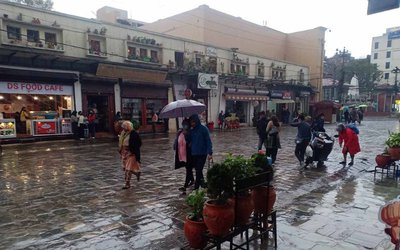Dr Stephen Luby, a professor of medicine at Stanford University in the USA is an expert in sanitation in South Asia. His seminal article in the Lancet in 2005 which was a randomized controlled trial on the significant benefits of soap in decreasing infections in the slums of Karachi is one of the most elegant articles in public health in South Asia.(That article has been discussed in this column). The good doctor is now helping out with another major study to see the effect of sanitation on the growth of children in Bangladesh, Kenya and Zimbabwe. One of the reasons that has prompted this study is very relevant to Nepal and India where there is phenomenal open defecation.
It is now believed that poor sanitation definitely leads to stunting of growth in children.DrLuby’s study deals with trying to determine the magnitude of effect of poor sanitation on growth.Stunting may lead to not only shorter stature,but the children may also be mentally deficient.
Data is beginning to show that despite a reasonably good diet Indian children are more stunted than their counterparts in sub-Saharan Africa ( for example Somalia, the Congo) where nutritious food may not be as readily available as in India for children.
The one significant difference in these children is that the Indian children are brought up in areas of open defecation unlike the African children. Indeed according to news reports half of India’s population urinate and defecate outside, and by all accounts Nepal cannot be far behind (no puns).
In the Ganges in Varanasi where many pilgrims bathe, a stream of 20 million gallons of sewage flows directly every day into the river just above the bathing ghats. Many pilgrims bathe in this water and brush their teeth in nearby outlets. In a smaller way, the polluted waters of the Bagmati and Bishnumati witness similar activities.
The infections ( like hookworm, amebas, typhoid, to name a few) triggered by poor hygiene due to open defecation so debilitate the child that the body has no strength left to power and develop vital growth in the child. In other words the child’s body is so busy fighting infections and resulting inflammations that all the important nutrients are diverted away from the vital activity of physical and mental growth. So, the child is stunted and malnourished. In fact now there is evidence to show that the malnourishment during childhood not only predisposes the child to infections, but as an adult the child will also be more susceptible to non-infectious diseases such as heart disease, diabetes, and stroke.This is a clearly a double whammy situation.
But what is becoming clear is that just building new toilets may not be the answer. People’s desire to defecate in the open is strong in this part of the world that the government- builttoilet outside become used for other “more useful” purposes like storing fodder for cattle. Clearly this is a cultural problem and it cannot be dealt with in a simple technical manner. There is a parallel here with clean stoves.
In order to decrease indoor air pollution which leads to many problems including lung and heart diseases, for decades our government together with outside help has tried to introduce clean stoves in many of the homes that use traditional firewood for cooking purposes. But it is now obvious that many of these clean stoves are not used, and many people continue to use traditional firewood despite the soot and smoke inside these homes. Clearly here too somecultural factor may be at play.
Hence with the introduction of toilets and clean stoves it may be important to continually emphasize health education in this regard and importantly also study cultural aspects of societies to try to make these programme a success. What is clear is that just building a toilet or introducing a new stove will not produce the desired results.

Buddha Basnyat MD
Buddha Basnyat, MD, MSc, FACP, FRCP, Director of the Oxford University Clinical Research Unit-Patan Academy of Health Sciences, Kathmandu.
- Altitude Sickness
- Feb 20, 2018
- Post-earthquake Nepal: The Way Forward
- Dec 13, 2015
- The Annapurna Sanctuary
- Nov 29, 2015
- Diarrhea at the Summit
- Nov 08, 2015
- Altitude Sickness ( AMS, HAPE, HACE)
- Oct 15, 2015















